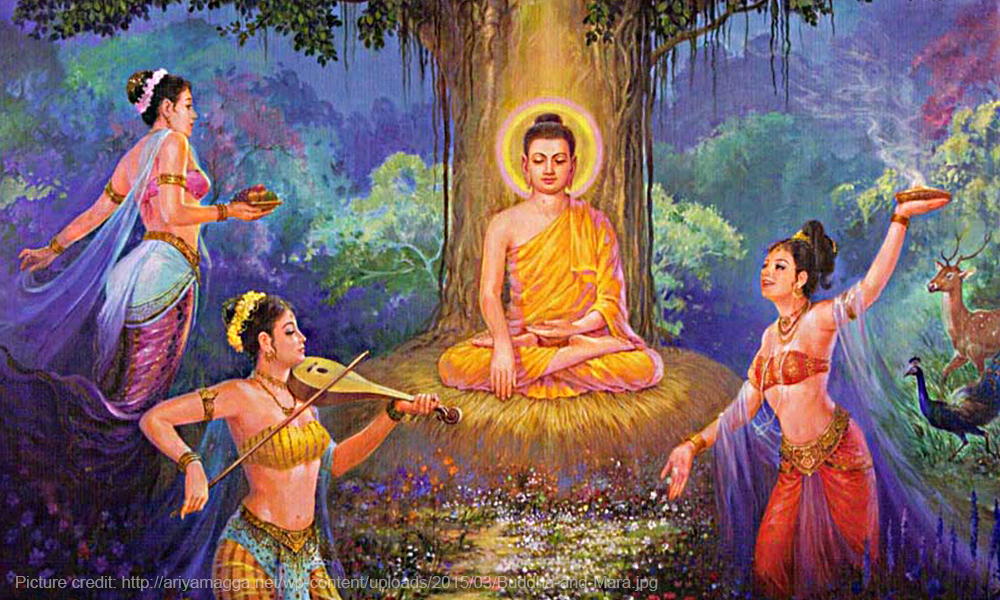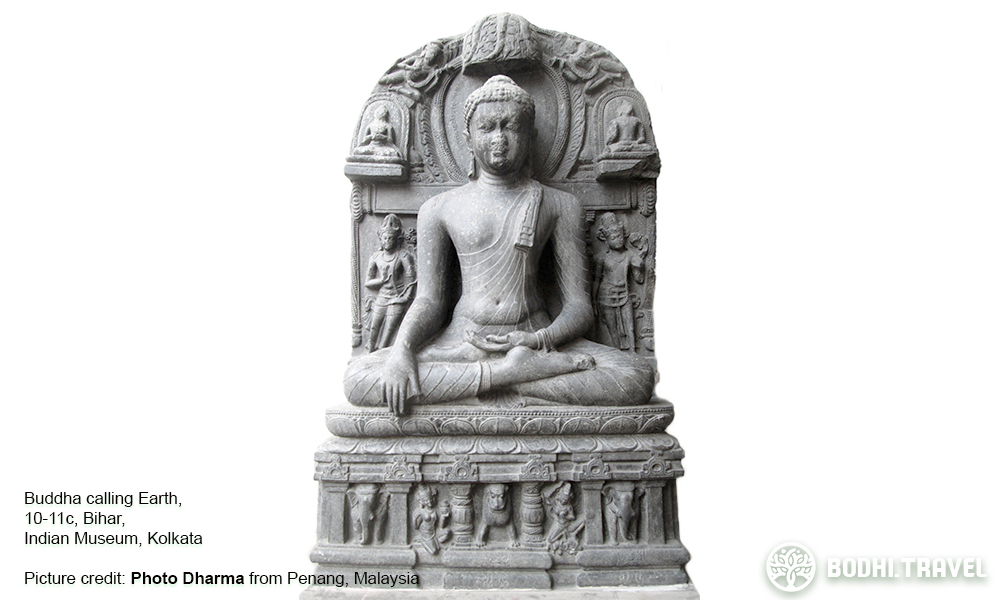
Mudras – Bhumisparsha
BODHI ADMIN - Posted on May 3, 2019 - 6,816 Views
A mudra or hand gesture is one of the many distinctive marks that one uses to examine Buddhist sculptures of Buddhas and Bodhisattvas. The word mudra is Sanskrit for “mark” or “gesture”. Although an external visual representation, the mudra signifies an internal process and indicate a state of mind.
For mudras associated with the Shakyamuni Buddha, there is also the additional aspect of anecdotes from the Buddha’s life.

The Bhumisparsha mudra is a common mudra associated with the Buddha. According to Buddhist traditions, the ascetic Gautama sat under the Bodhi Tree at Bodh Gaya after spending six years in fruitless search for the truth. When meditating under the Bodhi Tree, the ascetic acquired knowledge of his past lives and the past lives of all beings, the law of karma and became fully enlightened.
The ascetic was on the verge of attaining Nirvana when he was challenged by the evil one Mara. Seated under the Bodhi Tree with his two hands in meditative posture, he raised his right hand and pointed to the earth to bear witness to his Enlightenment.
The next time you visit a Buddhist temple, take your time to observe the Buddha with the Bhumisparsha mudra. Left hand resting in the lap with the palm facing upwards, right hand pointing to the ground in front with the palm facing inwards, the Buddha seems to be making a statement in His posture with the Bhumisparsha mudra.




Visit these places with our knowledgeable travel hosts to discover how the Buddha's Teachings influenced local cultures and histories.
[CLICK HERE] TO KNOW MORE ABOUT OUR TOUR PACKAGES.
MORE ARTICLES: Kinnara - Mythical Celestial Creature
MORE ARTICLES: The Eight Auspicious Symbols




